Sep 22, 2023
The Energy Transition Is a Technological Revolution — with a Deadline
What historical transitions — from water wheels to semiconductors — can teach us about today’s energy transition.
By: Yuki Numata, Laurens Speelman, Marissa Gantman
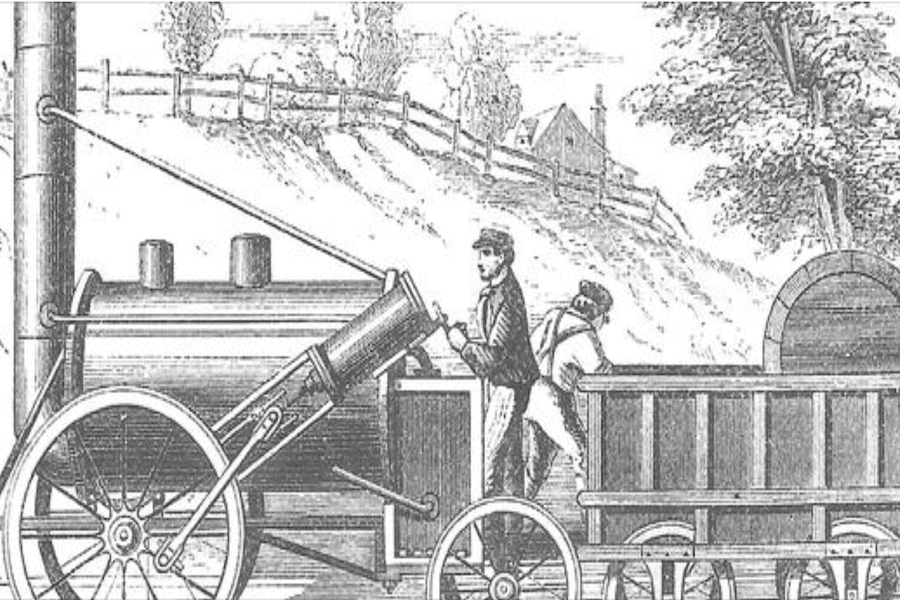
We are in the midst of a technological revolution driven by the rapid cost declines and proliferation of renewable energy. The cost of solar PV energy has fallen by 80 percent in the past decade, wind energy by 65 percent, and batteries by 80 percent, with adoption of all three scaling exponentially and globally.
We can learn a lot from similar examples throughout history — such as the rise of the steam engine in the first Industrial Revolution or the development of semiconductors in the Information Revolution — and what this means for the energy transition.
From a key input to a cascade of innovations
Some examples of well-known historical transitions include the First and Second Industrial Revolutions, the Age of Oil, and the Information Revolution. Also known as technological revolutions, each of these historical transitions was catalyzed by the emergence of a “key input” — typically a new material or source of energy — that is rapidly falling in costs, inexhaustible for the foreseeable future, and compatible with a variety of applications.
These key inputs are important because their falling costs and/or perceived inexhaustibility create a window of economic opportunity that interested actors can capitalize on. Initially, that opportunity involves new innovations that directly utilize the new key input. This cluster of new innovations lead to a new set of emerging rules for society, ranging from what society considers as “progress,” to work and consumption practices to organizational models. These new rules then open further opportunities for new markets and businesses.
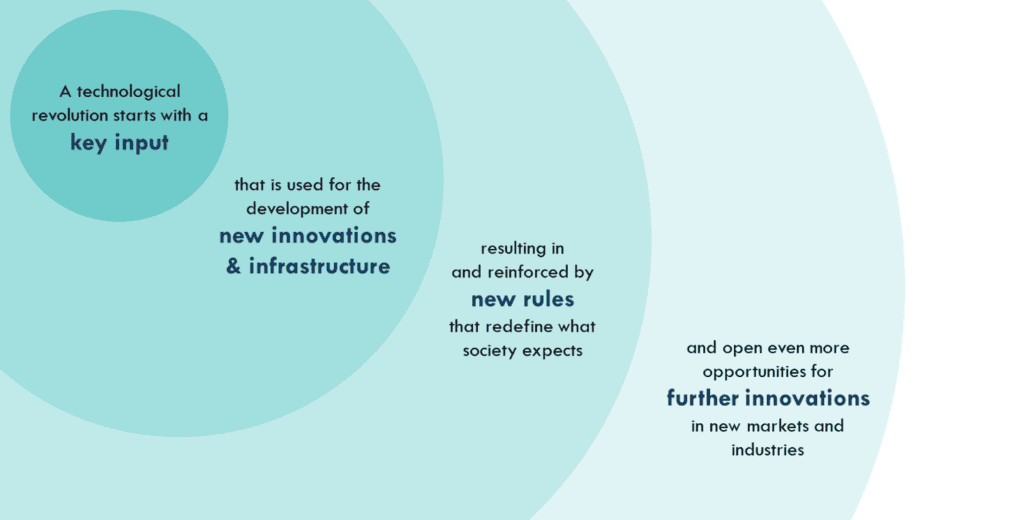
The First Industrial Revolution
The First Industrial Revolution began in the late 1700s in Britain. The water wheel was one of the first key inputs of this time. It was used to power cotton mills and led to the rise of the mechanized cotton industry. The late 1700s also saw a rapid increase in the number of canals in Britain, which facilitated not just the broader use of water wheels but also the smoother and faster movement of factory-produced goods. This led to new rules for technological progress, such as factory manufacturing and mechanization, and on a broader societal level, urbanization as workers relocated to the cities and towns where new factories were located. Urbanization then led to further opportunities for new innovations, markets, and businesses that served the needs of the new city population, such as industrial farming and public services.

The next key input emerging shortly thereafter was coal. The modern steam engine, patented in 1769, saw rapid improvements during this time. It was adapted to power steamboats, iron steamships, and steam locomotives in the early 1800s. These innovations in transportation led to the formation of regional networks resulting from the movement of people and goods and perhaps most importantly, information. The success of the telegraph — first unveiled in 1844 — was in large part due to its synergy with the railways built for the new steam locomotives. Telegraph wires were laid along railroads to take advantage of their right of way, and they in turn, allowed for improved coordination of train schedules. As regional movement became more common, this led to further innovations facilitating regional activity, such as the US postal service and national banking system.
The first coal power plants emerged in the 1880s, providing electricity first for street lighting, followed by electric trams and certain industrial uses.

The Second Industrial Revolution
In the late 1800s, cheap steel as a key input led to yet another cascade of innovations. Steel was more durable than wood or iron and allowed for the construction of large steel steamships and transcontinental railways that facilitated the formation of global networks. Global movement created a need for global communication: in 1865, the International Telegraph Union was formed, with the first transatlantic telegraph cables completed the following year. The Universal Postal Union was established in 1874 to coordinate worldwide postal service.

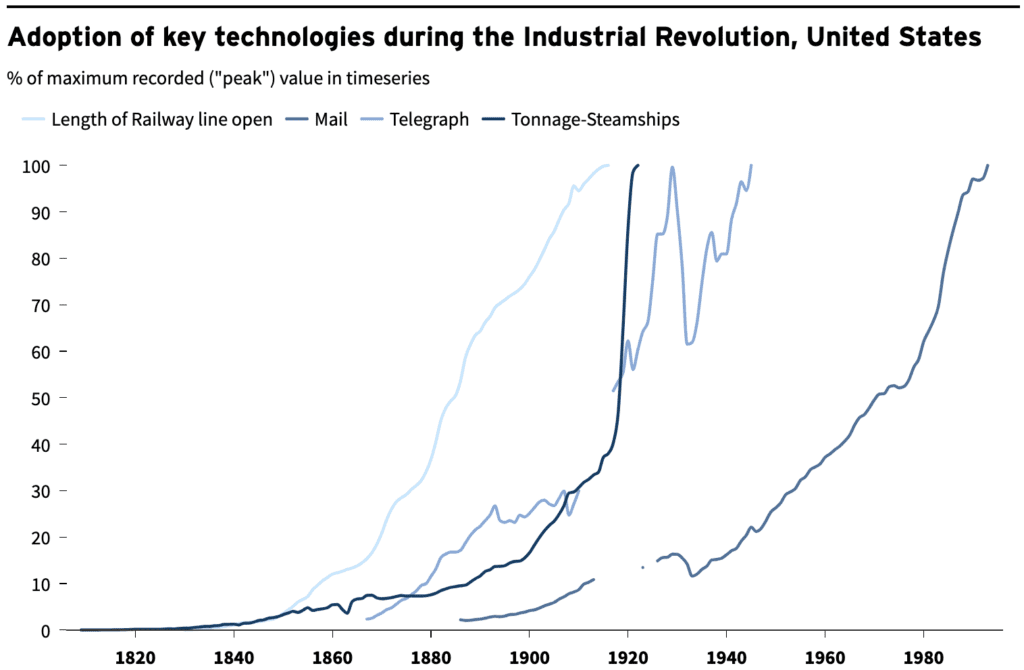
The Age of Oil
In the early 1900s, the emergence of oil as a key input directly enabled the development and diffusion of the automobile (Perez 2010). Highway development created a new market for big box stores and fast-food restaurants. Meanwhile, the emergence of natural gas enabled increased electricity supply for residential use, which then made way for the home appliances industry.
Together, these innovations led to suburbanization as one of the new rules of American society, alongside mass production and consumerism. These new rules created opportunities for further innovations such as standardized building materials that served the needs of suburban life.
At the same time, oil and gas replaced coal and steam as fuel for other modes of transportation, with diesel trains replacing steam locomotives, fuel oil replacing coal in shipping, and so on.


The Information Revolution
The key input driving the Information Revolution in the late 1900s was the semiconductor, an essential component of a wide range of electronic devices, including the computer and the mobile phone. The Internet Domain Name System was invented in 1983, followed by the World Wide Web in 1991. This provided a platform for the rapid development of communications and information services such as email and the search engine in the 1990s, and eventually social media. These innovations led to both the formation of decentralized networks as well as rapid globalization facilitated by the speed of information exchange. Existing industries adapted to the new information age, offering new services such as digital payments, streaming services, and e-commerce, among others.
In addition, semiconductors transformed many industries, as digital control systems, robots, and sensors allowed for increased automation of key processes.

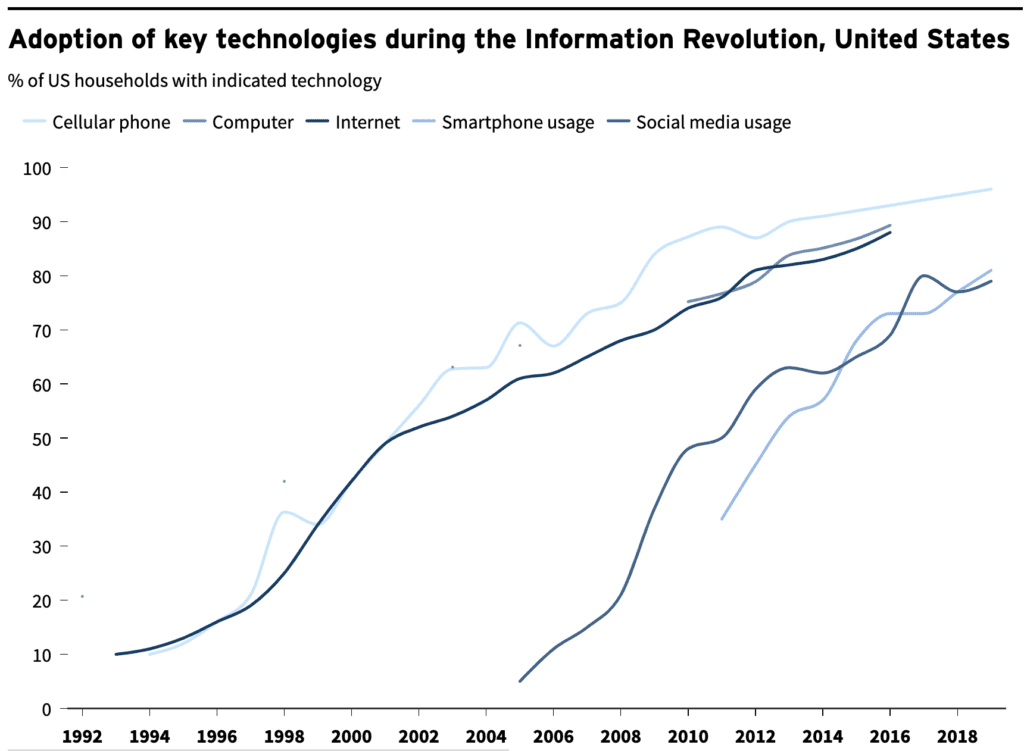
The energy transition is a technological revolution
The energy transition has all the markings of a technological revolution. It is driven by renewable energy — particularly solar and wind power — as a key input. They are rapidly falling in cost, virtually inexhaustible, and compatible with multiple applications.
Simultaneously, we are also seeing rapid cost declines and efficiency improvements in battery technology that increase our ability to make use of solar and wind power. Similar patterns are also emerging for electrolyzer and fuel cell technologies, which allow us to harness solar and wind power in the form of green hydrogen.
In short, we are already beginning to see the beginnings of an innovation cascade. The supply of clean electricity, along with batteries and green hydrogen, is opening the way for new innovations in transportation (e.g., EVs, ammonia-powered shipping, power-to-liquid sustainable aviation fuel), industrial processes (e.g., green steel), building energy use (e.g., heat pumps, rooftop solar), and more.
These innovations are, in turn, creating demand for the development of new infrastructure such as the smart grid, EV charging networks, and hydrogen storage and pipelines.
The new rules emerging from and driving this cascade of innovations include decarbonization, electrification, and sustainability. As these rules become more established, they are likely to open the way for further innovations such as meat and dairy alternatives, carbon dioxide removal, and circular business models, which, though not directly enabled by renewable energy, align with the needs of a society operating under the new rules.

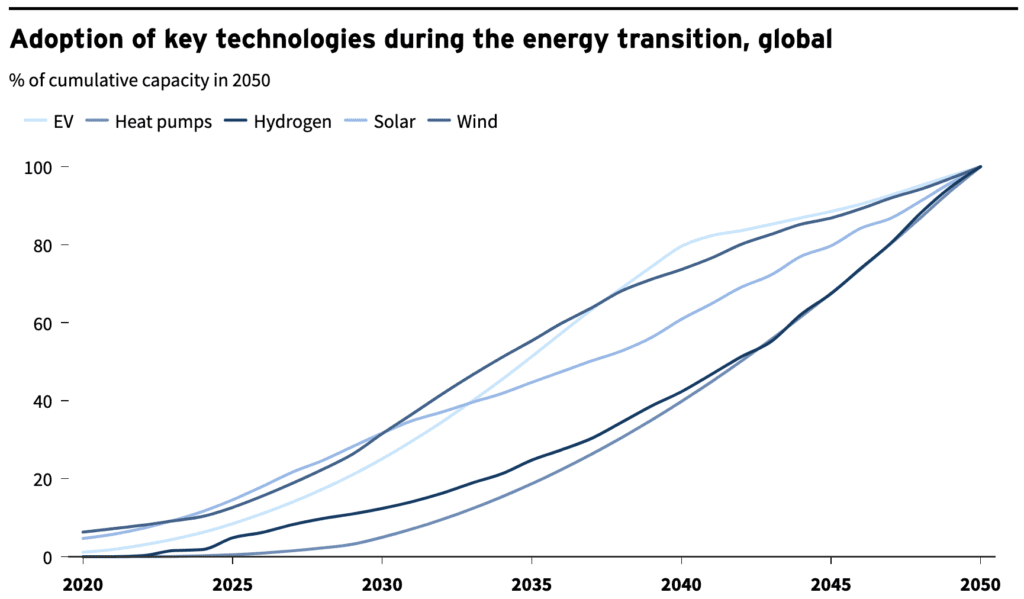
What’s different about the energy transition? It comes with a deadline.
The biggest difference about the energy transition is that it has a deadline: to ensure a sustainable future for human life on Earth we must meet the IPCC goal of limiting the Earth’s catastrophic warming by 2050. This means that we must meet net zero by 2050.
Past transitions did not have a deadline and generally unfolded at a pace convenient to key actors and decision-makers. The energy transition, however, does not have such a luxury. The deadline calls for a transition at an unprecedented speed, which means intentional planning and coordinated action to accelerate the changes needed for a sustainable future.
Looking Back to Plan Ahead
The energy transition is a technological transition. Renewable electricity generation and all technology applications that will follow to replace fossil fuels with electricity will fundamentally change the way we experience energy and pollution even before the end of this decade. Costs will continue to decline, new innovations will develop across all major systems in our economy, and society will change in ways we cannot yet foresee, including our relationship with nature.
As we try to plan and coordinate actions across multiple sectors and systems, research on historical transitions can provide us with valuable insight on how such systems change unfolds. While it is important to note that the innovations perspective is only part of the picture, it nonetheless provides a clear vision of why the changes happening today signal the beginnings of a broader societal shift. In addition, it provides insight into the types of innovations that are likely to emerge – and the order in which they may emerge – in the near future. A solid understanding of how various innovations impact one another, as well as the role of societal rules in driving further innovations and systems change, will be valuable for developing well-informed strategies to accelerate and guide the energy transition.
Corporate leaders and policymakers interested in staying ahead of the transition may thus find themselves asking questions such as:
- How can sectors beyond energy and mobility take advantage of the rapidly falling costs of renewable energy, batteries, and other emerging technologies?
- What else needs to be true for other sectors to be able to capitalize on this opportunity, and how can I make that happen?
- How is the general public responding to the new emerging rules?
- How will their expectations of companies and policymakers evolve as these new rules take hold?
- What can I offer — as a service, policy, or product — that will both cater to and reinforce these expectations?
Finally, while this piece focuses on aspects of technological revolutions that we should seek to leverage for the energy transition, we can and must also learn from the failures of past transitions. The need for an accelerated energy transition is a direct result of the failures of past transitions to account for social inequality and environmental impacts, exacerbated by patterns of overproduction and overconsumption.
To ensure that the energy transition proceeds in a just and equitable direction, leaders must consider the following questions:
- What are the environmental and social externalities caused by the rapid production and adoption of new technologies and innovations? What can be done to minimize those externalities?
- How can we ensure our resources and energy are used efficiently and productively when rapidly decreasing costs may reduce incentives for efficiency measures?
It will be the same questions that were ignored or dismissed in past transitions that will help us shape an energy transition that is not only the fastest, but also the most equitable technological revolution in our history.
This article was originally posted on the RMI website and is republished with permission.





